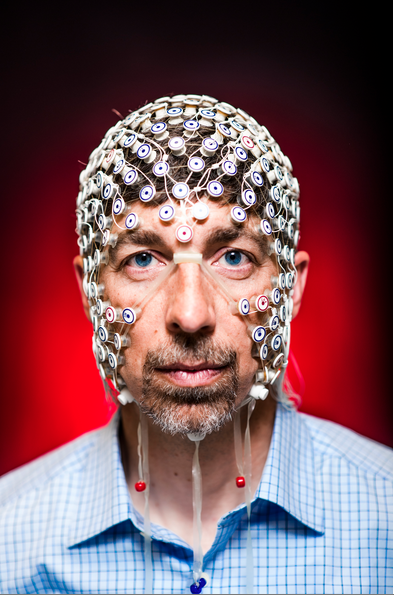Researchers at University of Wisconsin studied brainwaves to determine how interpretation of reality differs from imaginary thought in the human brain.
The researchers have determined a person’s brainwaves react differently when they are daydreaming versus when they are thinking about reality, as well as when they are asleep versus when they are awake.
Barry Van Veen, a professor of electrical and computer engineering, was focused on researching how the signals were transmitted between neurons.
“What researchers have been working on is developing methods for trying to figure out how information is being exchanged in the brain from measurements in the electrical activity in the scalp,” Van Veen said.
Neurons work on electricity and chemicals, Van Veen said. The neurons transmit electrical signals, and these signals can be measured at the scalp, he said.
However, the signals are very weak and can be blurred since the skull is between the brain and the scalp, making the signals hard to read sometimes, Van Veen said.
Researchers developed a method to identify how different areas of the brain are interacting, Van Veen said.
“They decided to try that method out, an experiment that one of my colleagues, Giulio Tononi [psychiatry professor and neuroscientist], conceived of, to compare what happens in the brain in perception … to what happens in the brain when you’re imagining something,” Van Veen said.
The results of the experiment came out as expected, Van Veen said. It had just never been measured until now.
Half of the participants in the research were asked to watch a video clip and replay the events in the video during the study, while the other half were asked to imagine themselves riding a magical bicycle before watching a silent video clip, a UW statement said.
The results of this experiment have been recently published in the journal NeuroImage, and they could help Tononi understand what happens in the brain while a person is sleeping and dreaming, the UW statement said.
However, Van Veen is looking for a more simple goal.
“The experiment provided us with a sandbox to test our algorithms,” Van Veen said. “We set this up, we expected there would be a contrast between these two different conditions, so the idea was to see if our algorithms could find that contrast. Now, the other goal of this was to show that there was a contrast.”
Although those two ideas sound like they contradict one another, there is no tool to measure how the brain interacts as a network, so the main goal was to see things that could not be seen before, Van Veen said.
Van Veen is currently involved in a short-term memory study, as well as a study comparing the difference between the brain while a person is awake and a person is sleeping.
The goal is to develop these tools and use them where they are needed, such as to study disabilities like epilepsy, Van Veen said.
“It takes a lot of people to do this kind of thing, and science moves, rightfully so, cautiously … My biggest concern is that things get portrayed accurately,” Van Veen said.













